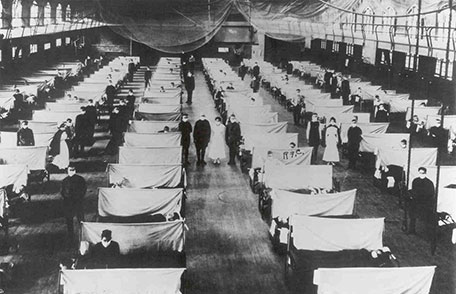1900 seems like a long time ago, but it really isn’t in the big scheme of things. The top three causes of death in the United States that year were tuberculosis, pneumonia, and diarrhea/enteritis.1 Diphtheria was number 10 in the list of all causes of death in the U.S. Eighteen years later, a deadly influenza pandemic swept the world, killing an estimated 50 million people worldwide and seeing the life expectancy in the United States fall by about 12 years in the space of a single year.2

We have been blessed since those years by improvements in health brought about by advances in nutrition, sanitation, public health, and medical care. If you look at the leading causes of death in the United States these days, the top three causes are heart disease, cancer, and accidents (unintentional injuries).3 In fact, if you look at the causes of death for countries in the top quartile of wealth for the world, the leading three causes are ischemic heart disease, stroke, and alzheimer’s disease/other dementias.4 Early death from infectious diseases has been replaced as leading causes of death by non-infectious diseases at the end of a much-longer life.
But if you turn your attention to the countries in the lowest quartile of income in the world, you see a much different picture. The top three causes of death today in these poorest countries are lower respiratory infections, diarrheal diseases, and ischemic heart disease. The top ten list for these countries also contains HIV/AIDS, malaria, tuberculosis, preterm birth complications, and birth asphyxia/birth trauma. The list is in many ways reminiscent of the 1900 list for the United States. When you step into a mission hospital in a resource-limited country it often does feel like you have, medically, stepped back in time. You step into a world of infectious diseases, of malnutrition, and of complications of obstetrics which are now uncommon tragedies in wealthy countries.
The theme for the World Health Organization’s World Health Day this year is “Universal Health Coverage”5 noting that millions of people in the world have no access at all to health
Tim Cavanagh, MD
1. CDC NCHS
Health United States, 1987
U.S. Department of Health and Human Services
https://www.cdc.gov/nchs/data/hus/hus87.pdf
2. CDC
Remembering the 1918 Influenza Pandemic
https://www.cdc.gov/features/1918-flu-pandemic/
3. CDC
Leading Causes of Death
https://www.cdc.gov/nchs/fastats/leading-causes-of-death.htm
4. World Health Organization
The top 10 causes of death
https://www.who.int/news-room/fact-sheets/detail/the-top-10-causes-of-death
5. World Health Organization
World Health Day, 7 April 2019
https://www.who.int/campaigns/world-health-day/world-health-day-2019
